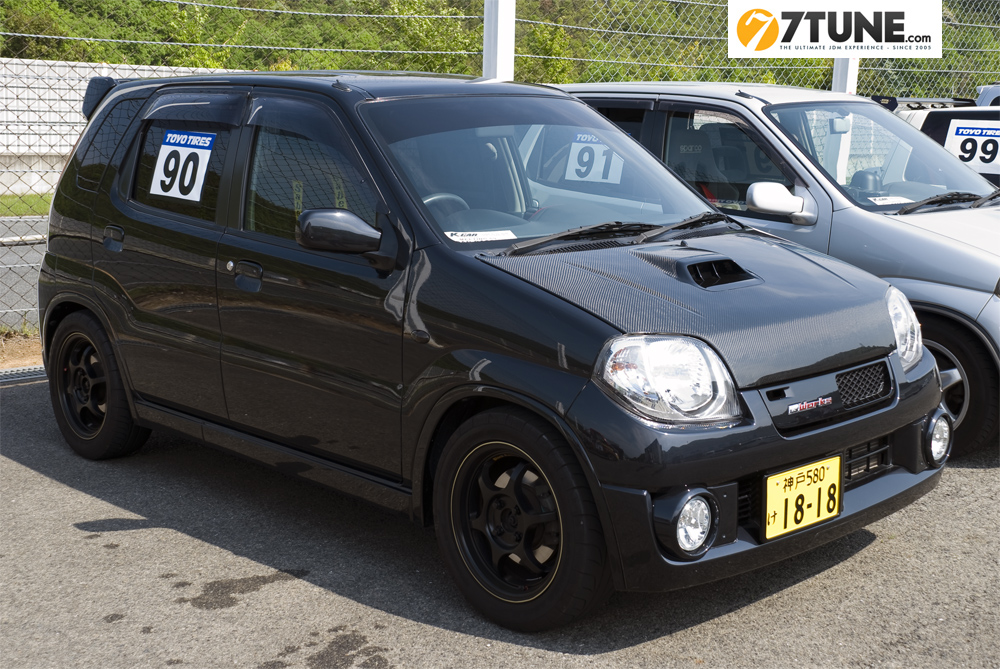“Kei” or “lightweight” cars are ubiquitous in Japan. Everywhere you go there’s at least a hundred of them scattered around the place either in small truck form doing deliveries or little vans and hatchbacks getting from A to B. It’s not often you seem them modified past a new set of lowered springs, an exhaust and a set of wheels. Maybe even a body kit if the owner is feeling adventurous.

Read the rest of this entry »
 Share on Facebook
Share on Facebook
 No Comments »
No Comments »
 Posted by Scott in Kei, tags: drift, Keu, mini, Truck
Posted by Scott in Kei, tags: drift, Keu, mini, Truck
found here
These are just some pictures pulled out of a Japanese drift magazine called Drift Tengoku or Dori-Ten for short.

Kei cars / trucks have a maximum engine size of 660cc and can also be turbo or supercharged and are usually quite small and light weight hence the name Kei Car. Many people in Japan tune them like these ones below or just use them as daily run abouts. The selling point of owning a Kei Car is cheap shakken (registration) which will usually costs about 30,000 – 50,000 yen every 2 years compared to shakken for car like my JZX90 which is around 130,000 yen or so.
Read the rest of this entry »
 Share on Facebook
Share on Facebook
 No Comments »
No Comments »
 Posted by Scott in Kei, tags: AWD, Clipper, Curoe, D1, Daihatsu, drift, Kei, L700, Lsd, Mira, Nissan
Posted by Scott in Kei, tags: AWD, Clipper, Curoe, D1, Daihatsu, drift, Kei, L700, Lsd, Mira, Nissan
From Speed Hunters

With such a beaten up body and a D1 Street Legal sticker on its sides, this Daihatsu Mira could only by a drift car, but how? Simple, take an AWD Mira, get rid of the front dive shafts and you got yourself a Kei-car drift machine! 120 PS aren’t much but there are only 600 kg to haul around.
Read the rest of this entry »
 Share on Facebook
Share on Facebook
 No Comments »
No Comments »
Was looking around the net for pictures of cool Pro-Touring style cars and came across this thread
VWvortex
on page 2 there was this car
A 1963-65 ? Falcon Sprint pro-touring !

Read the rest of this entry »
 Share on Facebook
Share on Facebook
 No Comments »
No Comments »
by Paul Crowe – “The Kneeslider“ on 6/29/2009
Here’s a 4 stroke engine concept you have to see to understand, the Peraves Superballmotor uses a multipart sphere to replace the usual crankshaft, rods and pistons of a normal internal combustion engine.

Read the rest of this entry »
 Share on Facebook
Share on Facebook
 No Comments »
No Comments »








 Entries (RSS)
Entries (RSS)